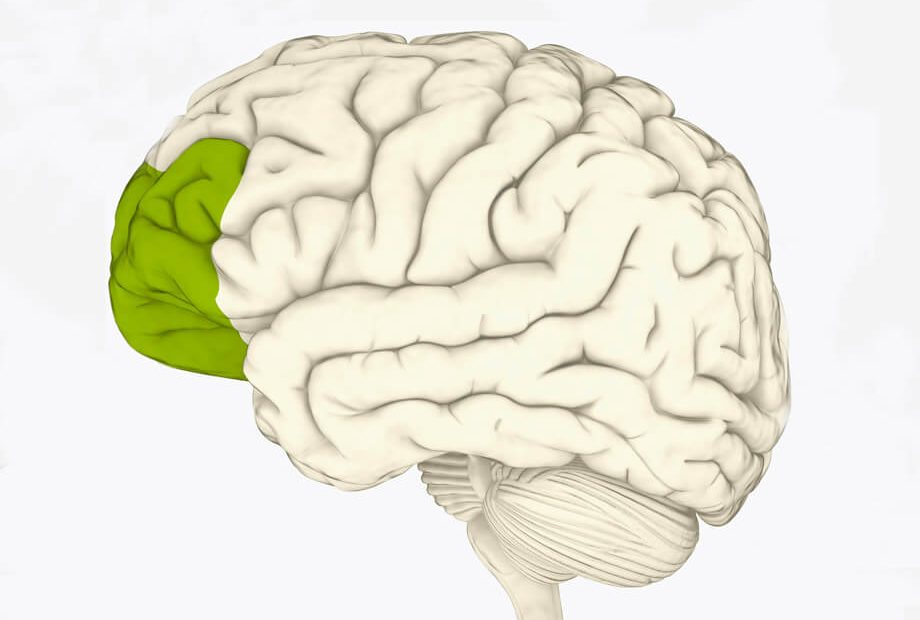The history of neuroscience is paved with neurological deficits, specifically of individuals who underwent damage to brain structures through accidents and survived to tell the tale. Perhaps one of the most famous individuals is Phineas Gage, a railroad worker in Vermont who survived an accidental explosion that drove an iron rod through his head. A large part of the brain area located in front of the head (also known as the prefrontal cortex) was damaged. With the caveat of exaggeration and embellishment of sensational medical stories, physicians noted changes to Gage’s personality and behavior and described him to be profane, rude and impulsive, perhaps reflecting a lack of social inhibition. It was the first clue that the prefrontal cortex was important for higher cognitive functions.
The brains of primates are notable for an expanded prefrontal cortex. One hypothesized reason for this larger brain region is the very high volatility of diet for fruit-eating animals with a wide foraging area. New food sources are added daily with new fruit ripening, and the lifetime of ripe, unrotten fruit is short. Learning the complex, changing relationships between action (foraging), goal (ripe fruit), and reward (eating delicious fruit) is a function of the prefrontal cortex. More importantly, the prefrontal cortex allows one to formulate flexible strategies to navigate through the volatile relationships between actions, goals and outcomes.
In modern neuroscience labs, we study the prefrontal cortex as a primate undergoes “adaptive foraging” tasks; the rewards are sweet juice drops, but the probability or amount of juice changes according to some complex rules determined by the experimenter. The primate needs to adapt to changing rewards with flexible strategies. People generally do not need to forage for fruits in the wild, but the best example of an “adaptive foraging” task from modern life is dating apps.
Swiping left and right on dating apps is a deceptively simple task. Swipe right and you match! Primates too often have binary decisions in tasks in which they need to decide between the right and wrong choice to get a reward.
While deceptively simple, the dating app match game has multiple complexities befitting an adaptive “foraging” task. To begin, the number of swipes or “foraging” attempts are limited by the app itself or the time cost. The pool of available matches is quite volatile as the dating pool waxes and wanes everyday as prospective matches enter and exit the market. Geographic area strongly determines the possible source of matches, quite similar to foraging in a given area. The outcome of the swiping action is not always evident as there may be an undefined time delay between attempt and matching as the other side must respond. There exists a complex trade-off between exploration and exploitation as matches are presented one at a time rather than all at once.
A part of the prefrontal cortex in primates is responsible for the selection of objects based on economic value. In an economic choice task with two targets of unequal value (amount of juice rewarded), the cortical neurons calculate the expected reward for each choice and the actual reward that comes out of the choice.
Interestingly, there is a complexity to the “value” in a dating app match. The “intrinsic” value of the match (i.e., physical attractiveness, compatible personality, etc.) is conditional based on whether the match itself happens. The binary variable of match is a factor in considering the value in an economic choice task with a limited budget. Speculatively, the prefrontal cortex weighs the intrinsic value of the prospective match with an estimated probability of the match itself, most likely computed in to estimate the total value of the prospective match. This weighted value is likely used to guide actions (Looking at the photos, should I swipe right or left?).
Another function of the prefrontal cortex is to keep track of decision history. It is important to look back on your successes and failures to inform your current decisions. History of past actions and outcomes are used to update strategies. Primates in an adaptive foraging task keep track of the past rewards to evaluate how successful their current strategy is and whether to switch strategies. Similarly, in a dating app, a string of no-matches or matches based on previous swipes would inform the app user to change strategies (perhaps it’s time to lower the bar).
Equally important as past history is the context. In primates, different contextual cues (e.g., red squares or blue circles on screen) are associated with different rewards, and these association rules can suddenly switch, forcing the primate to adapt. In the dating app scenario, contexts such as recent breakup or current geographic location (due to out-of-town travel) can drastically change the relationship between actions (swipe right) and outcomes (you matched!) as the dating preferences or pool can shift quickly.
Humans may be far away from the forests of fruit trees, but our brains are not. The same brain region that allowed our ancestors to quickly find delicious food sources with complex cognitive strategies likely is the same region for deciding how to swipe in dating apps. Perhaps studying neuroscience “in the wild” of online dating would let us learn more about how our brain does complex cognitive tasks.
Related Content
- Skating on Thick Ice — how do we learn new motor skills?
- Neuroscience Graduate Student Driven by How the Brain ‘Sees’
- Grad Grooves: The Soundtrack of Our Science
- Choosing to Be Irrational: How Neuroscience Incorporated Economics, and Vice Versa
Want to read more from the Johns Hopkins School of Medicine? Subscribe to the Biomedical Odyssey blog and receive new posts directly in your inbox.
